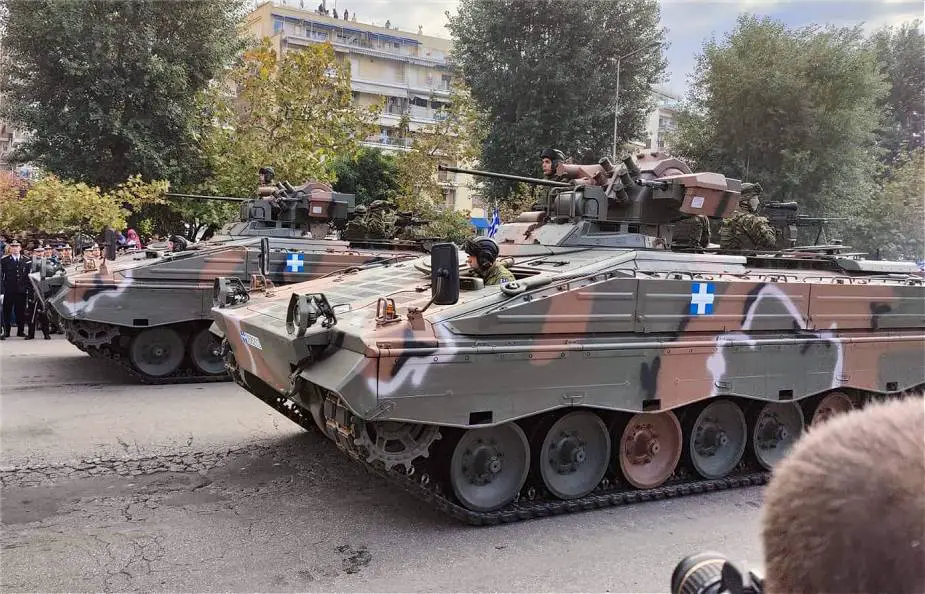Breaking news
German-made Marder 1A3 tracked armored IFVs are now in service with Army of Greece.
According to information published on the "Rheinmetall" Twitter account on October 28, 2022, the Hellenic army unveils for the first time to the public, its new acquisition of German-made Marder 1A3 tracked armored IFVs (Infantry Fighting Vehicles) repainted with Greek army colors camouflage during the military parade in Thessaloniki for the celebration of the national anniversary of October 28, 1940, known as OXI Day.
Follow Army Recognition on Google News at this link

Marder 1A3 tracked armored Infantry Fighting Vehicles of the Greek army at a military parade in Thessaloniki. (Picture source Rheinmetall Twitter account)
In June 2022, German Chancellor Olaf Scholz agreed with the Greek Prime Minister Kyriakos Mitsotakis on the transfer of Greek army BMP-1P tracked armored IFVs (Infantry Fighting Vehicles) to Ukraine in exchange for German-made Marder 1A3 or 1A5 tracked armored IFVs.
On October 17, 2022, the first six German-made Marder 1A3 tracked armored IFVs (Infantry Fighting Vehicles) were handed to the Greek army. This delivery of new combat vehicles was made within the framework of an agreement with Germany and the replacement of the BMP-1 armored vehicles of the Greek army which were given to Ukraine.
The Marder is a tracked armored IFV (Infantry Fighting Vehicle) that entered into service with the German army in October 1968. In 1988, the German company Thyssen Henschel was awarded a contract covering the conversion of 2,100 Marder 1 A1/A2 series vehicles to the A3 standard over a 10-year period at the rate of 220 vehicles a year, with the project starting in 1989. The first vehicles were handed over to the German Army on 17 November 1989. The Marder 1A3 is still in service with the German army.
The Marder 1A3 layout consists of three main parts with the driver sits at the front left side of the hull with the engine on its right, the two man-turret is mounted in the forward part of the roof, with the commander on the right and the gunner on the left and the rear of the hull can accommodate up to six infantrymen.
The armament of the Marder 1A3 includes one Rheinmetall MK 20 Rh 202 20mm automatic cannon, one MG3 7.62mm coaxial machine gun, and mounted to the left of the 20 mm cannon are six electrically operated 76 mm smoke grenade dischargers.
The Marder 1A3 is fitted with a new passive armor package weighing 1,600 kg was fitted to provide protection against penetration from the Russian BMP-2 30 mm cannon. This package consists of frontal armor on the hull, add-on armor on the glacis plate, conformal add-on armor on both sides of the turret, three box-type armor components on both sides of the hull (so blocking off the hull firing ports), spaced armor plates on the roof to cause premature detonation of top attack, add-on armor with a stowage compartment at the rear door and improvements in human engineering.



















